Abstract
The exotoxins produced by ten strains of C. ulcerans (two human, six bovine and two equine) have been studied. On the criteria of toxin-antitoxin neutralisation and immunoprecipitation tests using highly specific diphtheria and C. ovis antitoxins with crude toxic filtrates, (NH4)2SO4 concentrates, and partially purified chromatographic preparations of these, together with the presence or absence of inhibition of the action of staphylococcal beta-haemolysin, and the reaction produced when injected intradermally into rabbits, two toxins could be identified, namely diphtheria toxin and C. ovis toxin. There was no evidence for the production of a third toxin specific for C. ulcerans. Five strains produced both diphtheria and C. ovis toxins. In four diphtheria toxin predominated, but in the fifth C. ovis toxin predominated. Two strains produced only diphtheria toxin and two only C. ovis toxin, though there was good but not complete evidence that a third strain (Revell) also fell into this latter group. Considerable variation occurred in the concentration of each toxin and, where both were present, in the proportion of each.
Full text
PDF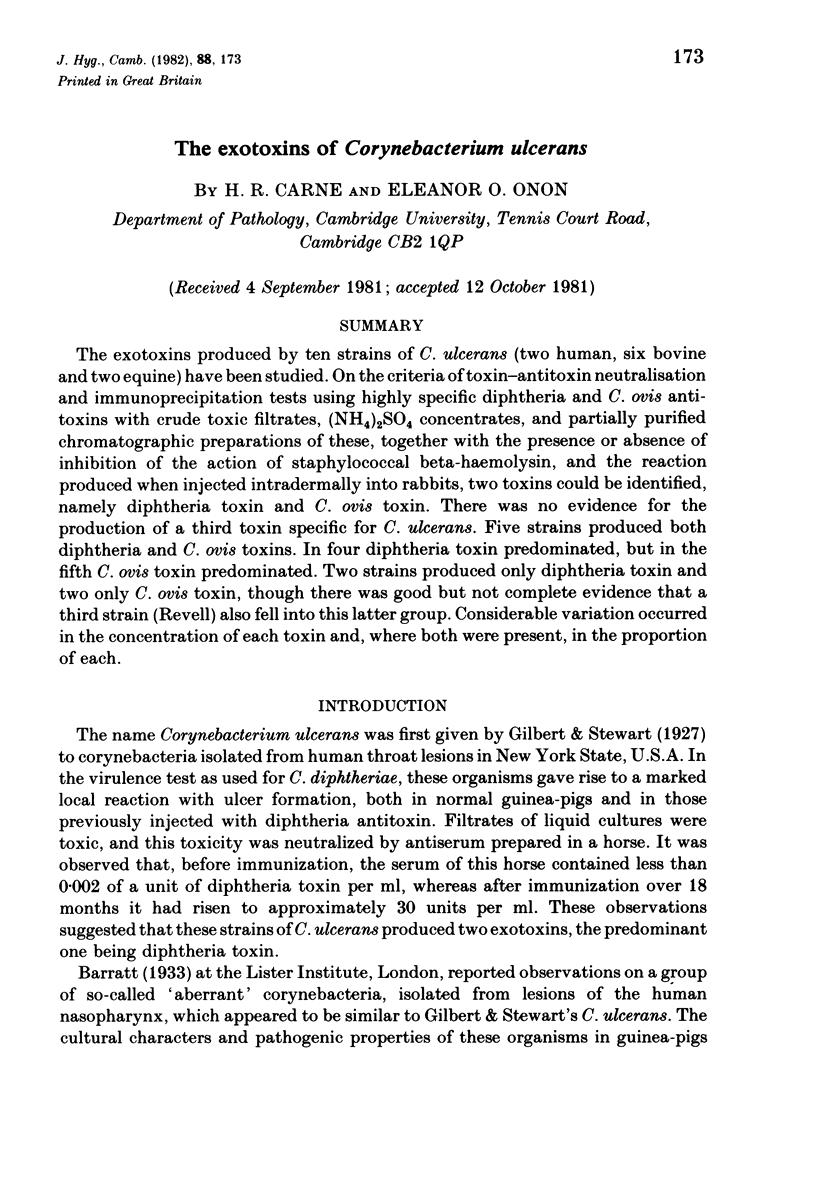

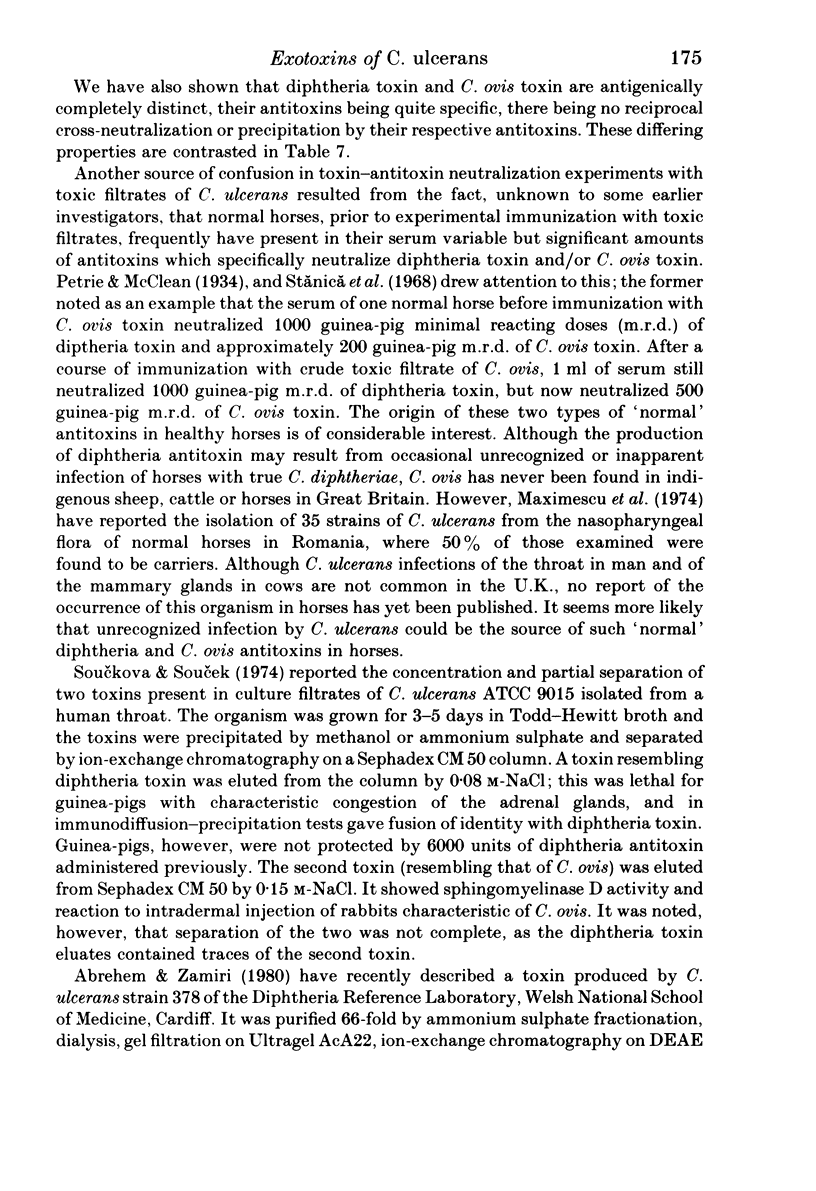








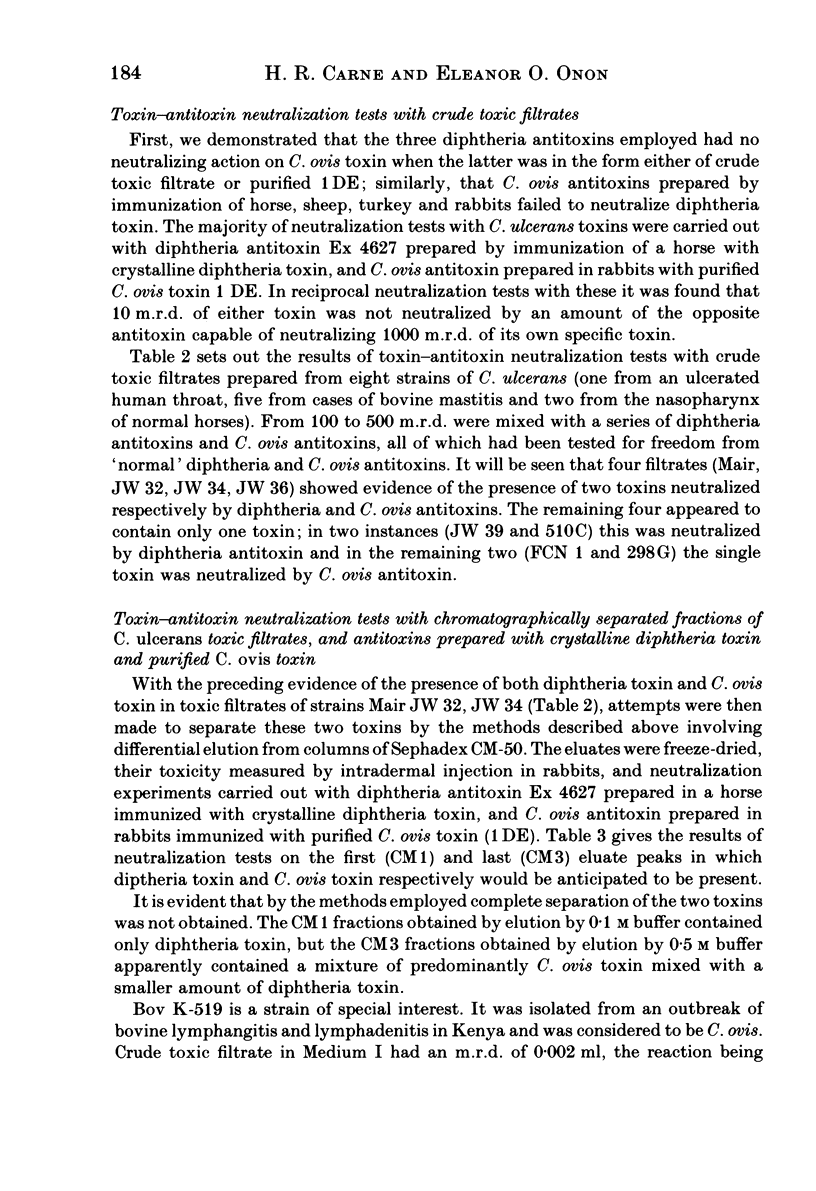

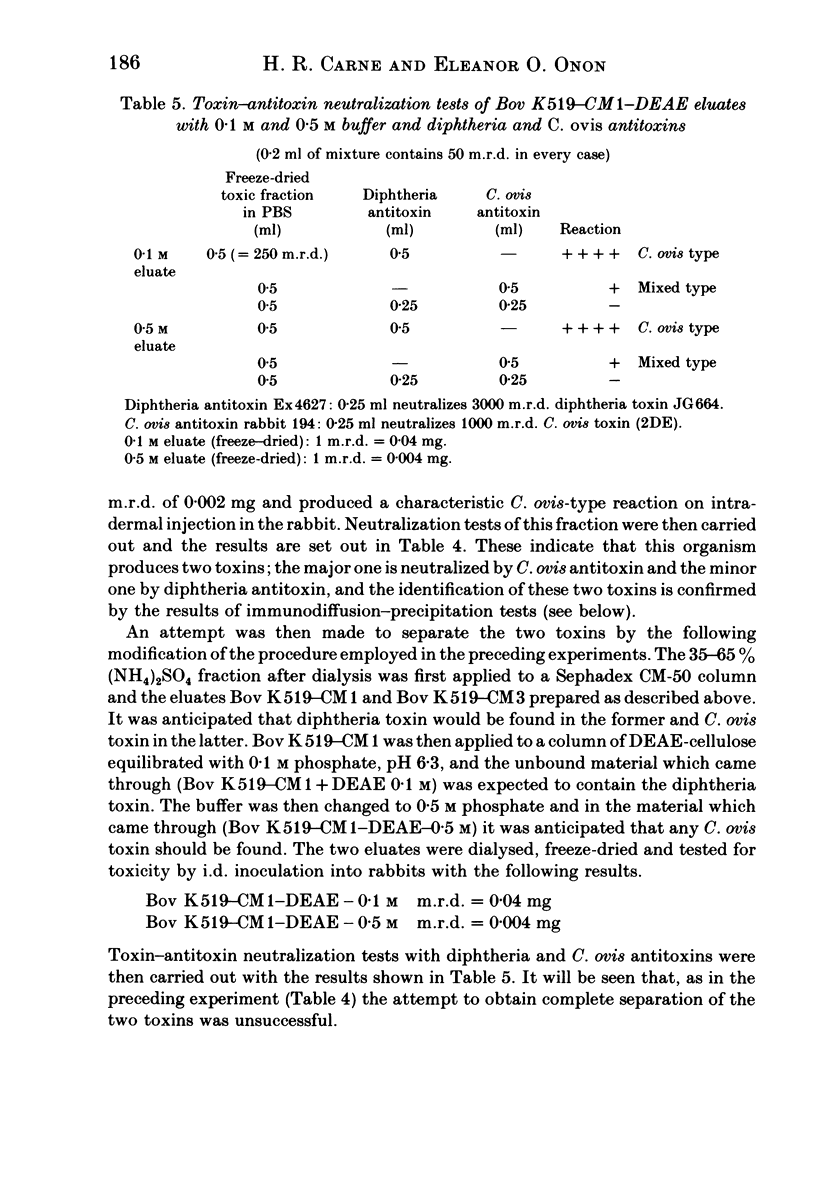



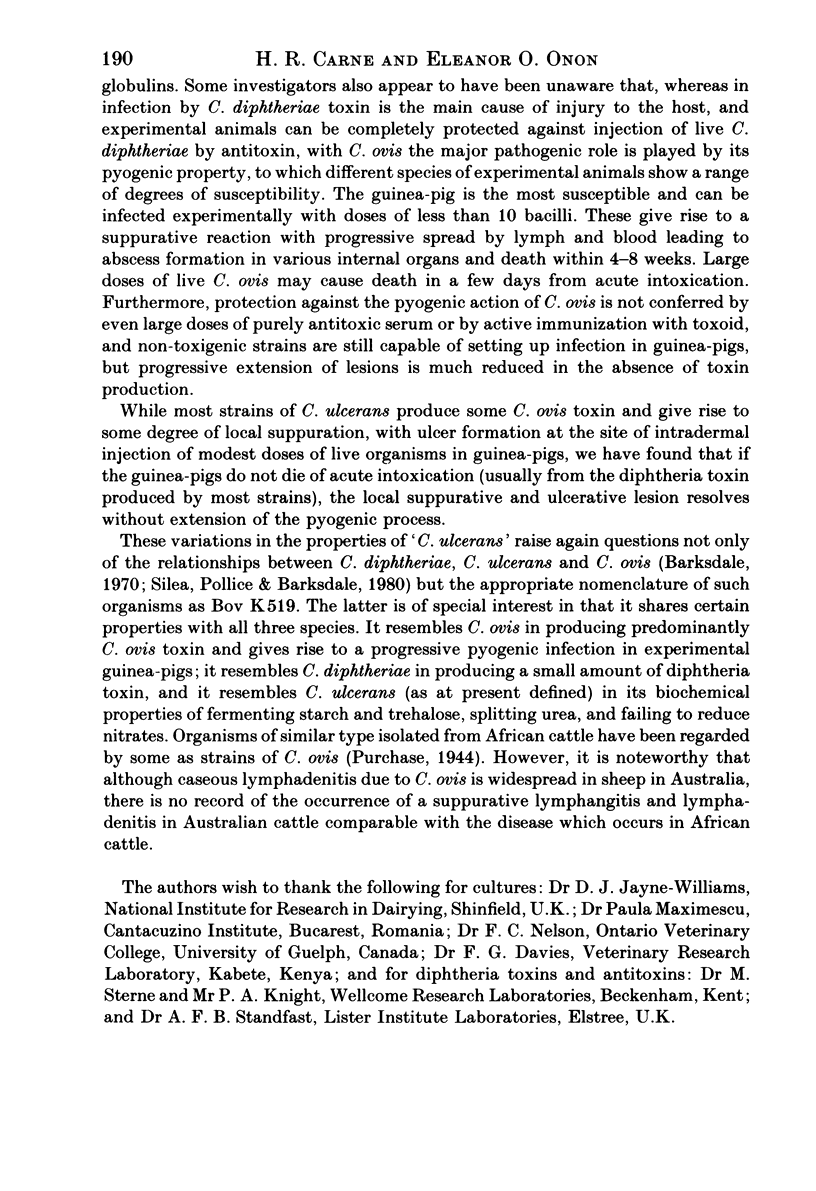

Selected References
These references are in PubMed. This may not be the complete list of references from this article.
- Abrehem K., Zamiri I. Purification of a protein toxin from Corynebacterium ulcerans. J Med Microbiol. 1980 Nov;13(4):587–591. doi: 10.1099/00222615-13-4-587. [DOI] [PubMed] [Google Scholar]
- Barksdale L. Corynebacterium diphtheriae and its relatives. Bacteriol Rev. 1970 Dec;34(4):378–422. doi: 10.1128/br.34.4.378-422.1970. [DOI] [PMC free article] [PubMed] [Google Scholar]
- Carne H. R., Onon E. O. Action of Corynebacterium ovis exotoxin on endothelial cells of blood vessels. Nature. 1978 Jan 19;271(5642):246–248. doi: 10.1038/271246a0. [DOI] [PubMed] [Google Scholar]
- Collier R. J. Diphtheria toxin: mode of action and structure. Bacteriol Rev. 1975 Mar;39(1):54–85. doi: 10.1128/br.39.1.54-85.1975. [DOI] [PMC free article] [PubMed] [Google Scholar]
- Gill D. M., Dinius L. L. Observations on the structure of diphtheria toxin. J Biol Chem. 1971 Mar 10;246(5):1485–1491. [PubMed] [Google Scholar]
- Lovell R., Zaki M. M. Studies on growth products of Corynebacterium ovis. II. Other activities and their relationship. Res Vet Sci. 1966 Jul;7(3):307–311. [PubMed] [Google Scholar]
- Maximescu P. New host-strains for the lysogenic Corynebacterium diphtheriae Park Williams No. 8 strain. J Gen Microbiol. 1968 Aug;53(1):125–133. doi: 10.1099/00221287-53-1-125. [DOI] [PubMed] [Google Scholar]
- Maximescu P., Oprişan A., Pop A., Potorac E. Further studies on Corynebacterium species capable of producing diphtheria toxin (C. diphtheriae, C. ulcerans, C. ovis). J Gen Microbiol. 1974 May;82(1):49–56. doi: 10.1099/00221287-82-1-49. [DOI] [PubMed] [Google Scholar]
- Onon E. O. Purification and partial characterization of the exotoxin of Corynebacterium ovis. Biochem J. 1979 Jan 1;177(1):181–186. doi: 10.1042/bj1770181. [DOI] [PMC free article] [PubMed] [Google Scholar]
- Soucek A., Michalec C., Soucková A. Identification and characterization of a new enzyme of the group "phospholipase D" isolated from Corynebacterium ovis. Biochim Biophys Acta. 1971 Jan 13;227(1):116–128. doi: 10.1016/0005-2744(71)90173-2. [DOI] [PubMed] [Google Scholar]
- Soucek A., Soucková A. Toxicity of bacterial sphingomyelinases D. J Hyg Epidemiol Microbiol Immunol. 1974;18(3):327–335. [PubMed] [Google Scholar]
- Soucková A., Soucek A. Two distinct toxic proteins in Corynebacterium ulcerans. J Hyg Epidemiol Microbiol Immunol. 1974;18(3):336–341. [PubMed] [Google Scholar]
- Stănică E., Maximesco P., Stoian C., Pop A., Oprişan R., Potorac E. Niveau de l'immunité antitoxique et le portage di bacilles diphtériques chez les chevaux, dans le stade actel de diminution de la morbidité par la diphtérie. Arch Roum Pathol Exp Microbiol. 1968 Sep;27(3):555–562. [PubMed] [Google Scholar]


